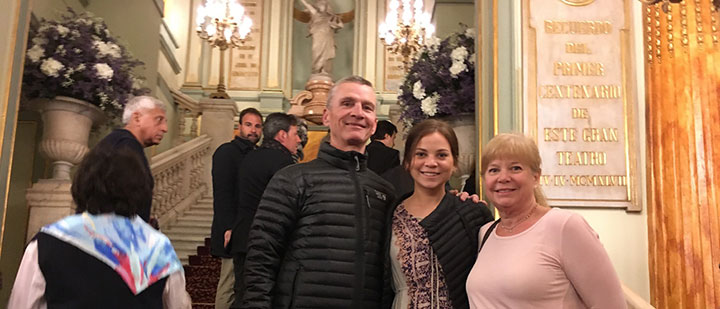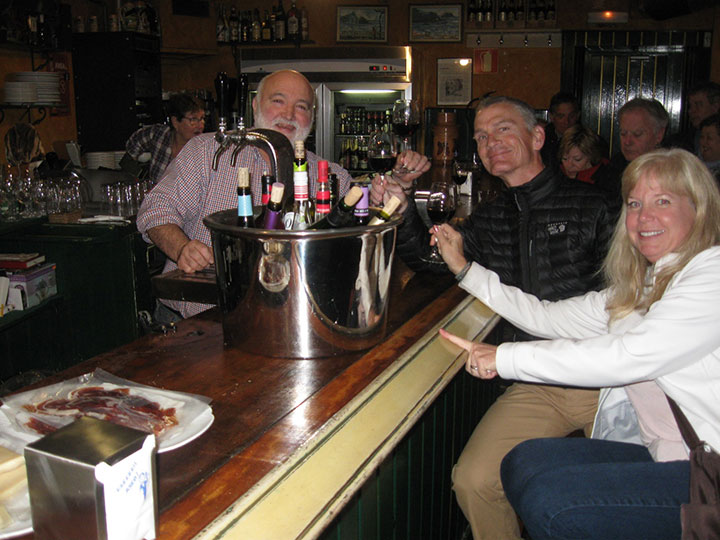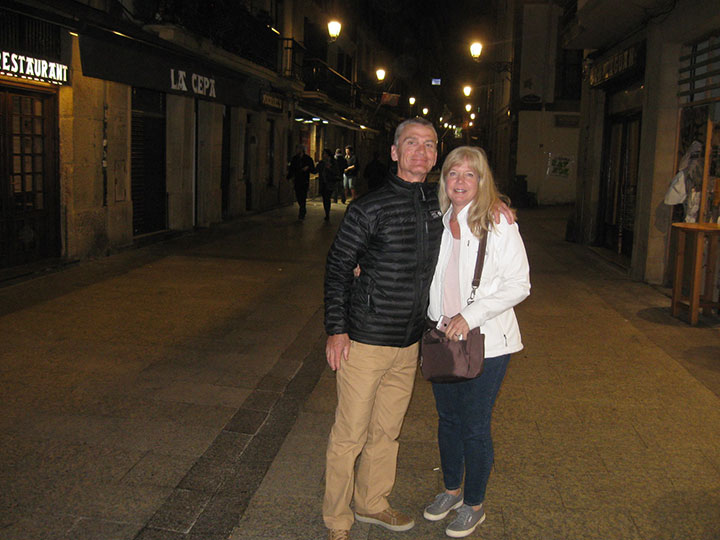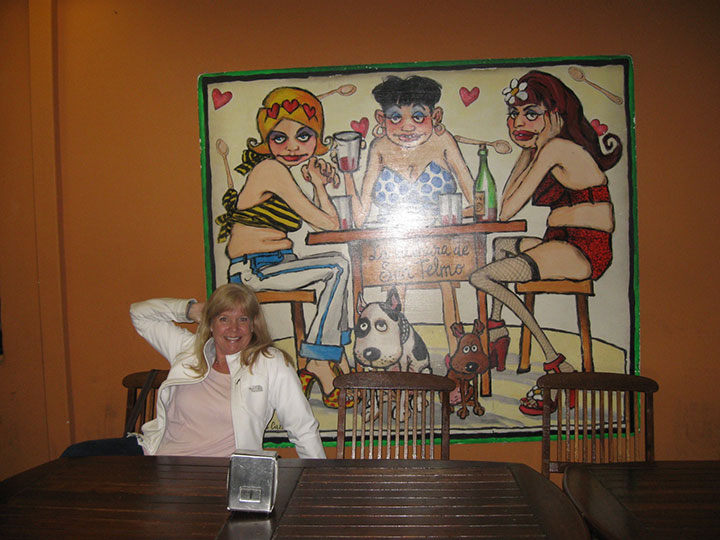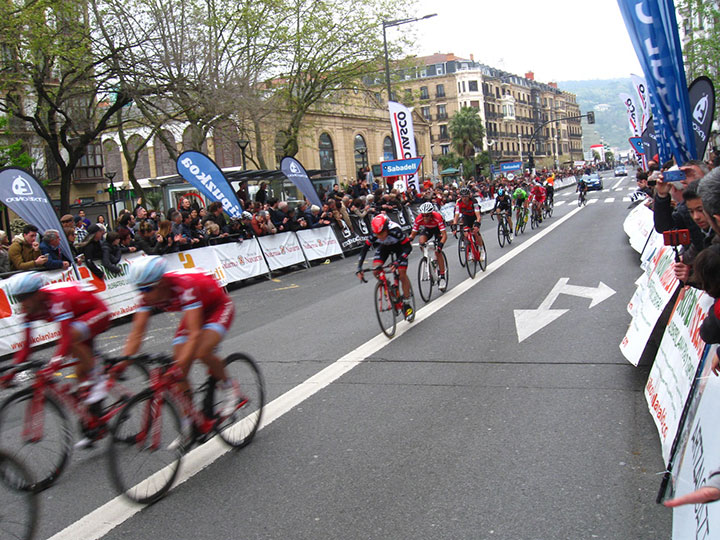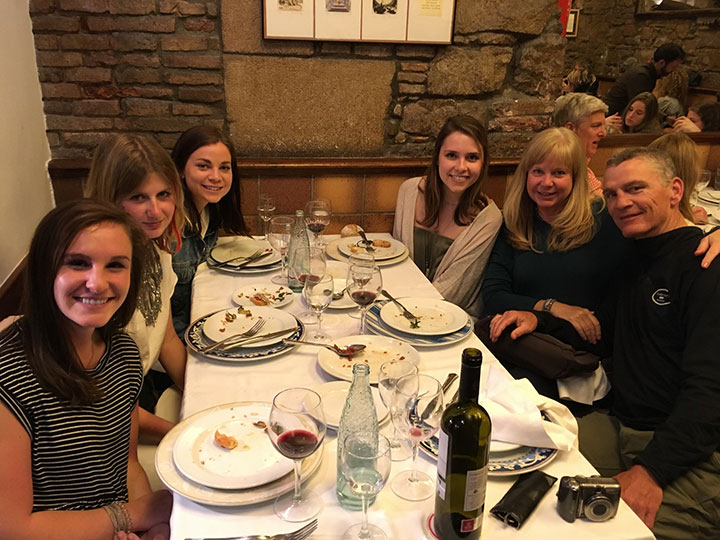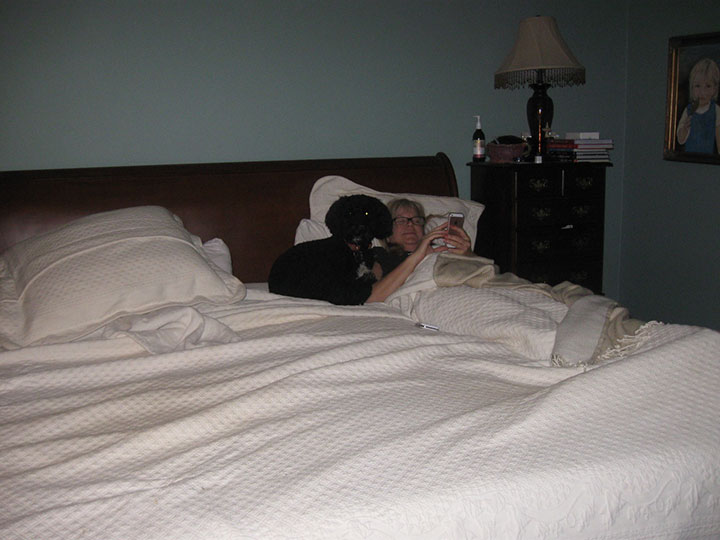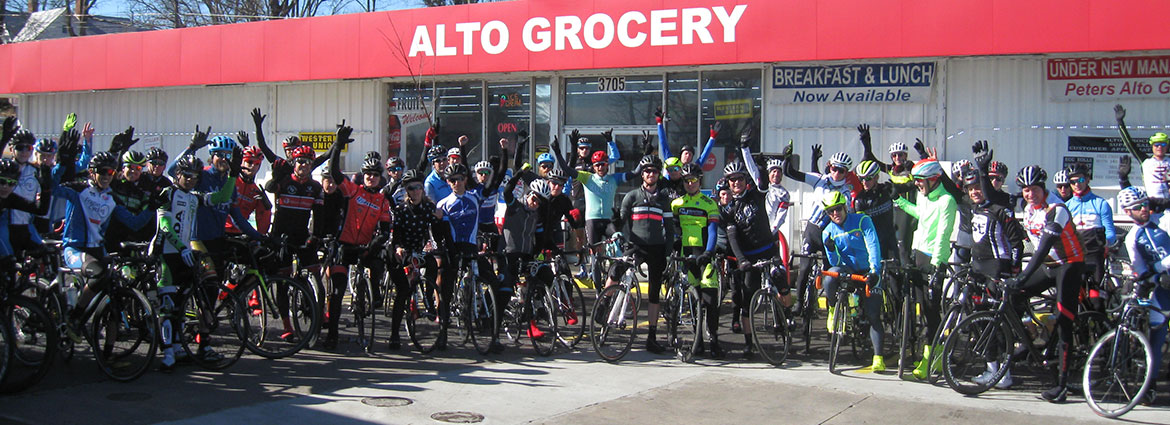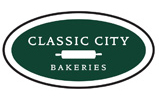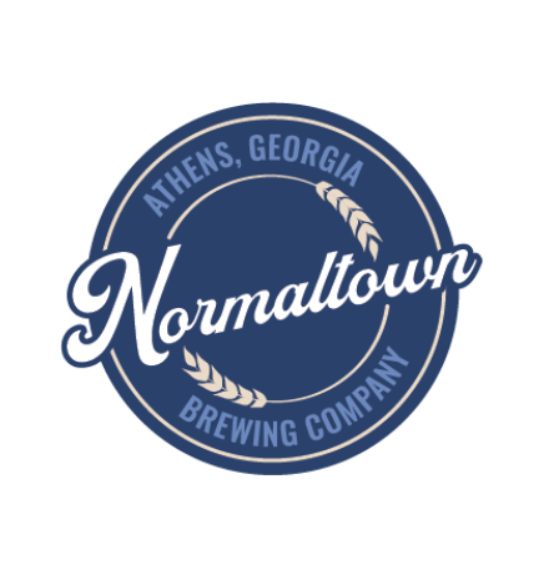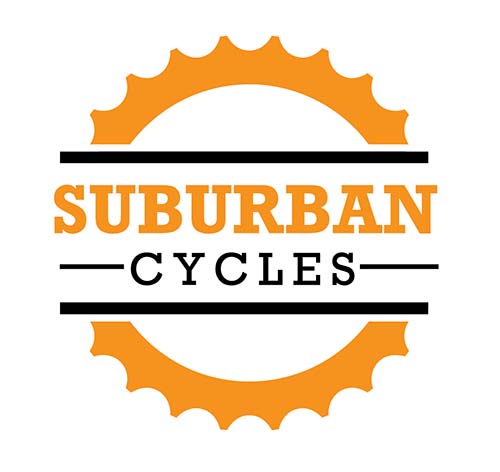Spain 2017
Spain 2017: Barcelona, San Sebastian, Madrid
Spain presented an opportunity to defy odds for both of us, Gay and I. Only recently we wondered if we’d ever have a chance to travel together again, much less to Europe, but windows of opportunity opened on all fronts and we bolted through. We landed in Spain.
Our youngest daughter, Jamee, was studying in Barcelona for the semester, so in April of 2017, Gay and I flew over the Atlantic to the Mediterranean Coast where we spent five high octane days with mi hija menor in Barcelona. On the fifth day, we took a five-hour train ride to San Sebastian and the Atlantic Coast where we stayed for another three days, our feet pressed to the accelerator the entire time. Last, we flew to Madrid in the center of Spain where we intended to finally relax on our final two days before flying home, but instead of serenely coasting through the day, we plowed ahead full bore, soaking in everything we could, canvassing the streets of the Old City, people-watching, marveling at the centuries-old stone structures, eyeballing some of the greatest masterpieces by Goya, Velázquez, Caravaggio and Raphael, drinking Spanish wine, and not only walking through a regal palace with million dollar chandeliers, but also a red-light district with hairy-legged hookers slouching in doorways. We racked up about nine miles of foot-stepping on our penultimate day, and about 50 miles for the entire trip.
Flying home on the tenth day at the end of it all, we were spent, exhausted, worn out, done in and broke, true signs of an epic, unforgettable trip. This journal is an attempt to preserve in memory a few of the details of our sortie to Spain, and is dedicated to my youngest, Jamee.
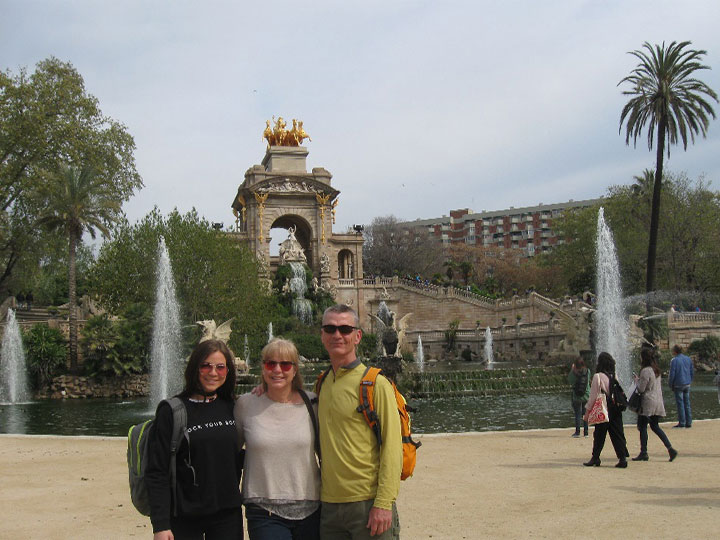
Day 1 (Wednesday > Thursday) / March 29-30, 2017 (Atlanta to Barcelona)
Day 1 was really two days because we lost six hours going over on an overnight flight…there were also other reasons. We boarded the plane in Atlanta at 11 AM on Wednesday and landed in Barcelona about 10 AM the next day. “Ay-yai-yai,” Gay said when we finally touched down. First, we flew to Miami and transferred to another plane that would take us to Barcelona. However, once we boarded our plane in in Miami we sat on the tarmac for over two hours, which threw my delicate nature slightly off kilter; but I bit the bullet and endured, after all, we were staying at four star hotels. (Gay wisely booked the rooms.) Finally, we took flight, and during the grueling overnight trip, we even managed a few brief snippets of sleep. The next morning as we approached Barcelona I saw the snow-covered peaks of the Alps in the distance and a little later we swooped over the Mediterranean Sea as we descended. When we landed that morning in Barcelona we were running on adrenaline and Gay said, “Sleep is for sissies and old folks, let’s roll.”
We were staying at the Gallery Hotel in the heart of the old city, and when we arrived at our room, we tossed our bags in a corner, sprayed on a little French perfume to cover up any lingering airplane stench, and high-stepped out the door. And once out the door, the architecture of this old city dazzles—over the next five days we would come to recognize a certain distinctive style and flair. Barcelona is an ancient port city and trading hub on the Mediterranean so we imagined a city with a fusion of influences in not only in architecture, but also culture, food, art and style. We weren’t disappointed.
We first walked to La Rambla, the famous pedestrian walkway in the heart of the old city about one mile away from our hotel. Large, elegant apartment buildings lined most of the streets on the walk over, and as we would see later, most of the city. Each building is distinctive in color and design, and there are obvious height restrictions in the old part of the city because most buildings aren’t more than five or six stories. As a result, the streets are sunnier because there are no soaring monoliths to block out the sun.
Many of the apartment buildings are made of brick, some are made of cement or stone, and they are of differing designs, sizes, patterns, and hues that somehow blend together in interesting ways, like the residents themselves. But no matter the differences in the design of the façade, each apartment has slender double doors or a casement window with a balcony and a fashionable iron railing. The design of the railings varies from building to building but each buildings’ railings are all uniform. The sight of the railings is striking because there are dozens and dozens of them in rows on each level of each apartment building. The balconies aren’t big but some are filled with potted plants, hanging baskets with trailing vines, and pots with bright flowers—orange, purple, white and red. The Catalan flag is draped over many of the railings—this is a proud region. As a whole, the balconies give the exterior of the building a certain elegance and appeal that would be lacking without them. It was always fascinating to see an older resident leaning on a railing and looking down at the people below.
It is also immediately apparent that in Barcelona, as is probably true in much of Europe, outdoor cafes are on every corner and line every street in the old part of the city, which is large swath of land; it is truly part of the European culture and we saw outdoor cafes in almost every part of our journey through Spain. In fact, in Barcelona there are no squared corners, they are all rounded to accommodate outdoor cafes, taxis, or parking spaces. As a result, a pedestrian must walk around the rounded corner, then cross the street. At first it seemed odd, but once we became accustomed to the flow, it did feel safer.
Walking to the Rambla, it was also evident that in Barcelona there is a world class bakery on every block—it was mind boggling! And unfortunately for us, there were about five first class bakeries within a block of our hotel. When we walked the streets, not only in Barcelona, but everywhere in Spain and France, we’d stop and marvel at the various pastries and baked goods on display in the windows. Sometimes, we were pulled inside by an irresistible force.
After walking our first mile of many, we reached La Rambla, which, has turned into a bit of a tourist carnival. But even so, La Rambla is an old street with a rich history, about one mile in length. It was Thursday and the streets seemed to be crowded with just as many well-dressed business people as tourists (we hadn’t come at height of tourist season, the summer). La Rambla itself is made up of a series outdoor cafes lining the middle of the walkway—we had a bite to eat at one—with some high-end clothes’ shops, banks, florists, restaurants and bakeries on both sides. The great Lionel Messi plays for FC Barcelona and his jersey is for sale everywhere. Outdoor vendors line the sidewalks selling artwork, magnets, lights and selfie sticks. Some artists have gone to incredible lengths to dress up as fantastical glittering creatures stepped right out of Harry Potter or Lord of the Rings. There are also a fair number of beggars of all stripes. La Rambla is also home to the Lyceu, the world-famous opera house, and the Baqueria, an ancient market still flourishing. We’d been warned La Rambla is also infamous for its pickpockets, so we were watching our backs. We agreed that if robbed, Gay would undertake to chase since I have a stiff back and a delicate nature—I would stand and yell for help.
When I saw the famous opera house, the Lyceu, I was overcome by a mighty power that caused me to think I was Warren Buffet and I bought three tickets for Gay, Jamee and I to Rigoletto for Saturday night—what better way to see the opulence inside, not to mention the opera is considered one of Verdi’s masterpieces. Afterwards, we walked to the Baqueria, the old market, with opera tickets tucked away in my pocket. Though the old city market has obviously been upgraded since its bygone days—climate controls, overhead lighting, refrigeration—there are still piles and piles of different types and colors of fresh fish on ice, dozens of cured Iberian hams hanging from overhead beams, blocks of all varieties of cheese behind glass, crates of Spanish wines, countertops filled with all types of tapas, baskets of all types of fruit—it was a smorgasbord of smells and a riot of colors. It was also noisy as dozens of vendors and customers all interacted at once.
Walking around the first day it was also quickly apparent that hundreds of people ride mopeds and bicycles in Barcelona. In fact, the city provides bikes that locals can rent with an app on their phone. A local can ride a bike from one location to another for only a small fee. Also, since Barcelonians are city dwellers most live in apartments, meaning there are a lot of walkers. The folks that do drive all drive small cars—there are no large cars in Barcelona—and many folks drive fast. But the multitude of people—cyclists, moped drivers, pedestrians and drivers—seem to flow relatively smoothly. Cars use one lane, and mopeds and bikes use another separate designated lane (one going each way) and traffic lights control the flow of traffic for all lanes. It was striking to see an ancient city taking progressive steps in areas of transportation.
We finally met our little Barcelonian, Jamee, and after rib crushing hugs, we continued touring, but now with nuestra hija leading the charge. Jamee took us into the Gothic Quarter, the Barri Gòtic, one of the oldest sections in the old city. The Gothic Quarter is a labyrinthine network of narrow, brick paved streets, old buildings and churches, and public squares. Some buildings date as far back as medieval times. Near the center of the Gothic Quarter is La Mercè basilica, a Baroque-style basilica and sanctuary built between 1765 and 1775. The architecture on the inside of all these old churches we saw in Spain, La Mercè basilica included, was stunning. Dim interiors, deep burnished wooden pews, alter and cross, lofty beams, dazzling stained glass, porcelain Mary’s, holy water in marble fonts, and reliquaries under glass give all the centuries-old the churches in Spain an aura of ancient wisdom.
After a little siesta back at our swanky room, we met Jamee, cousin Mary Ellen, Kate Bernard and Olivia (Mary Ellen’s roommate) and ate dinner at a local favorite, Cal Pep. Cal Pep is famous with the locals and is known for its tapas and its ambience—it exceeded expectations on all fronts. As many good restaurants are, it was in a small space and seating was a premium. We arrived about 9 PM and the six of us were tucked into a table near the counter, which was packed tight with customers, all locals from the looks of it. Watching the counter help serve the local customers was like spying on some ancient ritual that’s taken place for generations—this was a communion among locals. The different tapas we ate were excellent, bar none, as was the wine and a glorious time was had by all. We toasted the evening and the meal with a shot of apple brandy provided by the restaurant and it felt like a small glass of sunshine as it slid down. By the end of the night, as my children would say, due to a steady intake of alcohol, I was glowing, my headlights on high beam. Though we took the taxi home to avoid stumbling through the streets, we tallied six miles of trekking on our first day.
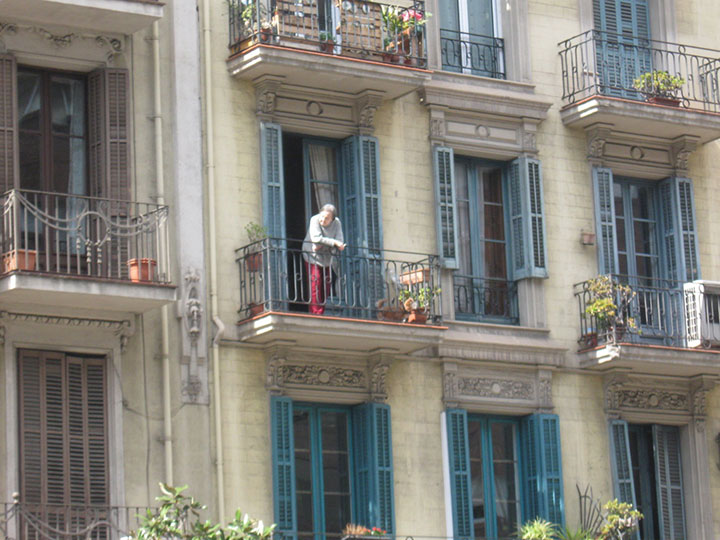
Day 2 (Friday) / March 31, 2017 (Barcelona)
Friday morning at 5 AM, due to the time change, my eyes popped open like broken blinds—I was wide awake. Gay rolled over and said, “Aye-yai-yai,” but she was up shortly after and we were both ready to attack the day—we could sleep back home in the States.
The hotel breakfast at the Gallery was not your typical Howard Johnson Continental breakfast. Bless these Spaniards’ hearts, they served eggs cooked to order, bacon, Iberian ham, fresh fruit, croissants, salmon, yogurt, toast and local jams, fresh squeezed Valencia orange juice, coffee and tea. I tried not to gorge but sometimes it was not possible. My gastronomic tour of Spain had begun in earnest the night before and it showed no signs of abatement this morning.
After breakfast we walked about one mile and met Jamee and Kate at the Arc de Triomf, a brick and stone arch built in 1888 as Barcelona’s main gate to the city’s World Fair. The walkway leading to the Arc is lined with palm trees. We walked to the Parc de la Ciutadella, a sprawling 70-acre park nearby with lots of greenspace and walking paths. It also is home to a zoo and museum, though we didn’t visit either. Jamee said she came to the park regularly to study, and it’s easy to see why.
After the park we continued our walking tour of the city. There’s no better way to see a city and to observe its inhabitants and to view the architecture than to walk. We walked by a wedding party taking photographs outside an old church. The bridesmaids all wore fire engine red dresses and the groom was in a blue suit and a red tie with a pocket square and the bridesmaids were swarming over him for the photo. Naturally, he was all smiles. We walked by two buildings designed by Antoni Gaudí, the famous architect who lived in Barcelona one hundred years ago. Gaudi’s work is highly recognizable and the structures he built attract thousands of visitors each year. We visited two of his houses close by, Casa Milà and Casa Calvet. Guadi liked bright colors, curvilinear lines and orotund shapes, and like most great artists, he has a distinctive style. In two days, on Sunday, we had bought tickets to visit his magnum opus, the Sagrada Família, a massive church that has taken one hundred and fifty years to build. Construction is still going on but is reportedly winding down.
As we continued our walking tour another piece of the architecture struck me—the doors. Many of the doors of Barcelona are magnificent. In the old part of the city they are huge, both tall and wide. Some of the more magnificent doors are made of thick wood, but other equally impressive ones are made of intricate iron work or glass, and some appear to be inlaid with gold. Some of the doors are arched, some rounded, and some have straight edges. They have different designs and are made of different types of wood. Many of the doors have heavy, ornate brass knockers also, some as big as a bowling pin. I imagined some poor, wretched, sick, starving traveler a few hundred years ago on a cold, rainy night banging with one of those huge clappers and yelling, “Please, my lord, let me in!”
A lot of business people—male and female—hustled and bustle about the streets of Barcelona. The men typically wear dark suits with a colorful tie or scarf. Shirts can also be colorful and many men, especially the older ones, wear sweaters or vests under their jackets, many times without a tie. The older men look proud and distinguished. The women of Barcelona also dress equally well and when I pointed out to Gay how gorgeous many of these dark-haired women are, she pointed to three men and said, “Ay-yai-yai.” I knew what she meant.
That evening we took a taxi to the beach and ate seafood at Escriba with Jamee and Kate—Kate was leaving to go back to Venice the next day. I had fish and Gay had a paella that was served on a tray that was as big as the lid of a trash can. Once again, wine was involved. We both cleaned our plates and we took a taxi home and fell into bed. We were still adjusting to the time change and we were tired, not to mention we’d walked about six miles. We slept a little later—I didn’t wake up until 6 AM.
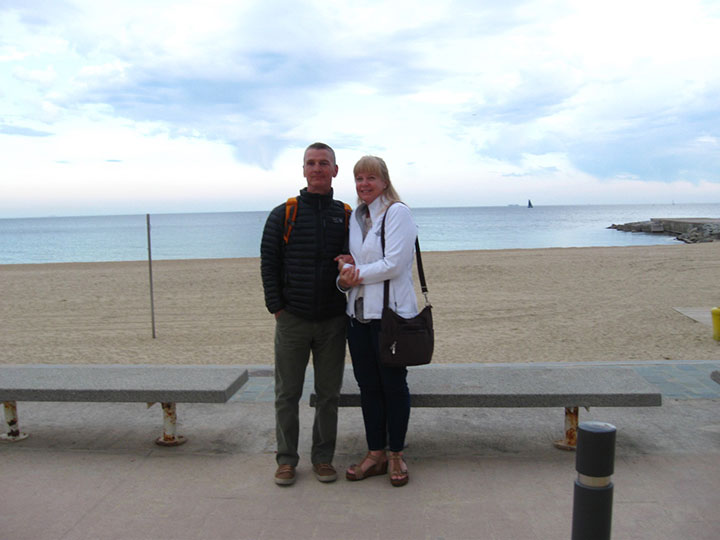
Day 3 (Saturday) / April 1, 2017 (Barcelona)
We woke up at 6 AM Saturday morning and felt a little more rested. After breakfast at the hotel, Gay bought gifts in the small market next to the hotel before we headed out the door. First, we walked 3.5 miles to a farmer’s market that was only open once a month. We walked out of the old city and into a more urban area. It was a long slog, but worth each step. Food trucks with local fare cooked to order were on hand, along with artisans who make and sell their own leather goods, shoes, shirts, handbags, cheese and wine. A lady strummed a guitar and belted out soulful tunes while we wandered around. Once again, I had a sensation I was Warren Buffet and made a few purchases—shirts, a wallet, a large chunk of pesto infused cheese, leopard print shoes for Jamee. Seizing opportunity, Gay also zeroed in for the kill and bought a few things. What could I say but Aye-yai-yai.
We ate lunch at the market and spent a considerable time wandering around gazing at the goods before starting back to the hotel. When we did get back to the hotel, we’d already racked up 7 miles, a full day by any score. But we weren’t done, we were walking to the opera that evening.
After resting our poor legs a little, Jamee rejoined us and we headed to La Rambla and the Lyceu Opera House, about one mile away. The auditorium is horseshoe shaped and we had box seats, just as Warren Buffet would have had. The auditorium itself seats over 2,000 people-and Rigoletto was sold out. The décor is sumptuous with red velvet seats, golden plaster moldings and brass lamps. There are five levels plus the main floor. The foyer has glittering chandeliers, murals painted on the ceiling, more gold molding, Doric columns, red carpet, marble floors and giant mirrors. I found myself singing an old Talking Heads tune:
And you may find yourself in a beautiful house
With a beautiful wife
And you may ask yourself, well
How did I get here?
My refrain: Grace.
Watching Rigoletto in the famous Lyceu in box seats overlooking the stage was a highlight of the trip. Rigoletto is a cautionary tale with the principle of karmic justice as its central theme. In the grim finale, poor old Rigoletto is done by his own failures. Walking home, I felt as light as air, and couldn’t stop singing “Tra la la boom di aye.” A couple of beggars told me I had a voice like Pavarotti. Naturally, I gave them both a Euro. Jamee and Gay tried to stay ten paces in front.
We both slept like drunken sailors on leave—we didn’t actually drink but we did walk close to 10 miles! Imagine our surprise when we woke up the next morning at 10 AM!
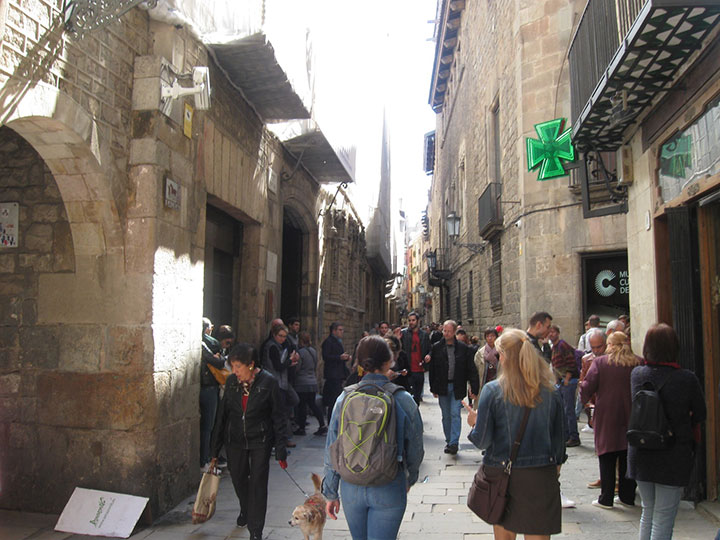
Day 4 (Sunday) / April 2, 2017 (Barcelona)
We only had one hour before we were due at Sagrada Família, the largest, the most magnificent, the gaudiest, and the most bizarre church I have ever seen. Sagrada Família is Gaudi’s masterpiece, and he worked on the church for over thirty-five years until his death in 1926 and it’s still not finished. Gaudi combined a Gothic style with art nouveau to create a church that looks like a sand castle from afar with soaring conical spires topped with rounded orbs, intricate designs on the façade which tell biblical stories, and large wooden doors stamped with biblical verses. Construction on the church has halted at times over the years due to wars and economic constraints, but the official word is the church is nearing completion. Today Sagrada Familia is a Unesco World Heritage Site, attracting thousands of visitors.
The interior of the church is a glorious wonder. No interior surface is flat—Gaudi combined, abstract shapes, sharp points, rounded ornaments and curvilinear lines to create a church unlike any other. The stained glass is multicolored and agonizingly beautiful. The roof in the central vault is about 200 feet tall and looks like the inside of a sea shell with purple, blue and gray stalactites hanging from the rook. The “stalactites” are actually columns used to support the roof and Gaudi said they were designed to look like trees and branches. In the center of the church, suspended from thin, invisible wires, hangs Jesus on the cross. Over Jesus is a circular covering that looks like a small parachute, from which orange lights hang, and behind the cross is a massive organ with 1,492 silver colored pipes. Many pilgrims were visiting Sagrada Familia the day we were there, a Sunday. Unfortunately, policía carrying Uzi submachine guns were also on patrol outside the church. So it goes.
After touring Gaudi’s famous church, we did more walking. We went to the Picasso Museum but the line was so long we gave up and kept trekking—we were learning the lay of this land. After a bite, I headed back to the room to check out the last two hours of Flanders and Gay and Jamee went shopping. Potentially, this was a big mistake, but what could I do but mutter Aye-yai-yai. Back in the room, I watched Philip Gilbert solo away with 55 kilometers remaining and take the monumental win with an epic ride. Poor Sagan and Van Avermat hit the deck late in the day and could never get back on terms. Boonen looked great in the penultimate race of his career but flatted late and was left on the side of the road, wheel in hand, singing the Delta blues.
After the race, it was a splendid, sunny day so I went cruising the streets on my own. Somehow, like crack, La Rambla drew me back. We were leaving the next day and I needed one more jolt. Walking around I noticed there are a lot of smokers. Perhaps this is true in most urban settings. That evening, for our final meal in Barcelona, Jamee took us to her favorite Mexican restaurant, Rosa Negra, where we ate like Vikings and imbibed more Spanish wine, mojitos and cervices. We toasted Jamee’s city one last time and afterwards walked her home. And showing she truly is a taskmaster, Gay forced me to walk back to the hotel from Jamee’s instead of taking a cab, and mind you, I had a sack-full of laundry on my back. (Gay had washed clothes at Jamee’s pad earlier.) We tallied another half dozen miles on the day and my legs were aching. My wife is ruthless that way.
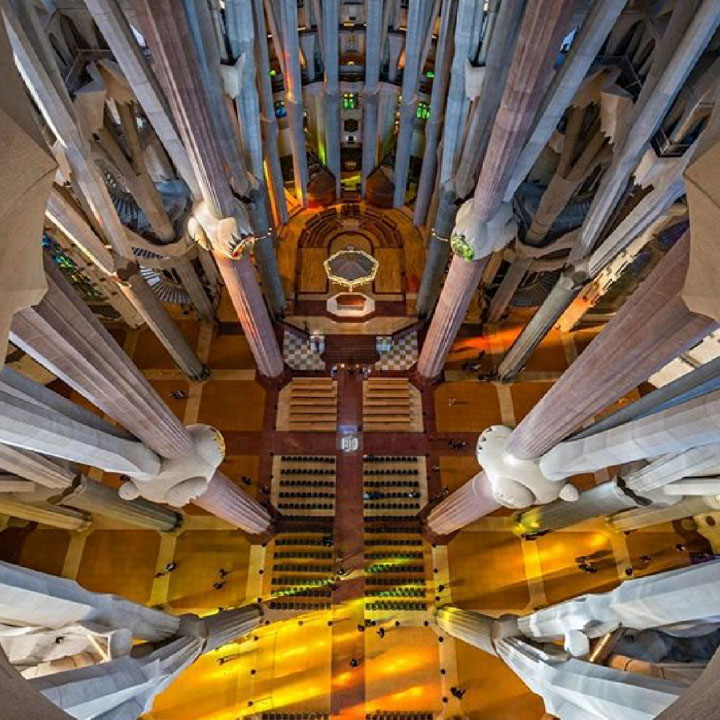
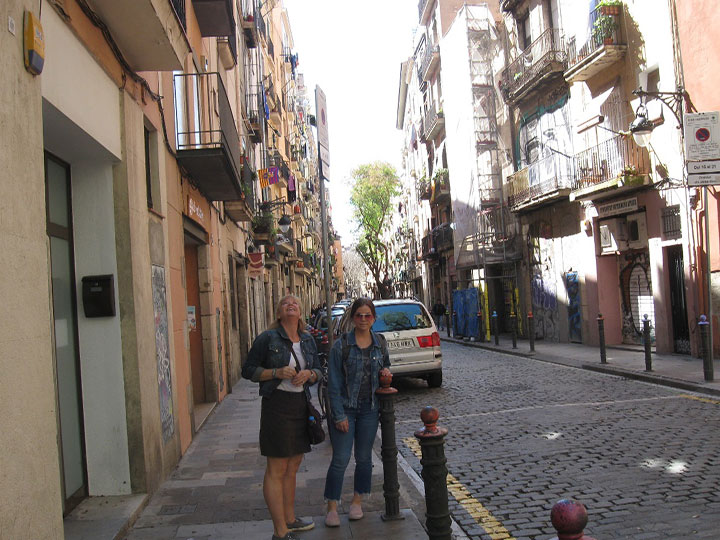
Day 5 (Monday) / April 3, 2017 (Barcelona > San Sebastian)
Today, Day 5, we were both happy and sad. We were excited to see San Sebastian, a city we’d heard so many great things about, but we were sad to be leaving Barcelona and nuestra hija menor. After breakfast, we walked to Jamee’s and said goodbyes and gave hard hugs to last one month, and then we walked back to our hotel. We started the day with a 3-mile round trip walk—I already mentioned my wife treats me like a galley slave.
We took a taxi from the hotel to the train station where we would take a five-hour train ride to San Sebastian, a city in northeastern Spain on the Atlantic Ocean in the Basque Country. The train was roomy and we had ample seating but the amenities were bare bones—we could buy a water, there was no food. But we didn’t care, we had big windows and a great view of the countryside. The suburbs of Barcelona are dry and arid with dirt hills and sparse, sere vegetation. Once we were beyond the suburbs and into the hills a town or village would appear every so often and the center of each town was marked by an old stone or adobe church with a bell tower. Many homes had large gardens and adobe brick homes, probably due to the intense summer sun. The Spanish countryside reminded me of the dry land that lies east of Denver and I thought it was the perfect setting for a Spaghetti Western. In fact, when I was back home in the holler I read that the Tabernas Desert in the Province of Almería in southeastern Spain was in fact a popular location used. (Credit: Wikipedia.)
As the train neared the Basque Country and San Sebastian (the locals call it “Donastia”), we climbed into hills and mountains, the same hills and mountains racers would climb in the Pais Vasco Stage Race, also taking place this very week. We were straddling the westernmost edge of the Pyrenees and a stage was finishing in San Sebastian on a day we would be there. The countryside went from arid desert to green grass fields and was filled with farmland. Several hillsides featured dozens of high powered white wind turbines scattered across the slopes. The train made about five stops along the way, and when we finally arrived, it was about 8 PM; we were whipped. This time, instead of hitting the town, we grabbed a bite to eat in the hotel, along with a liquid numbing agent, and climbed into bed. Tomorrow, once again, we would hit the ground sprinting.
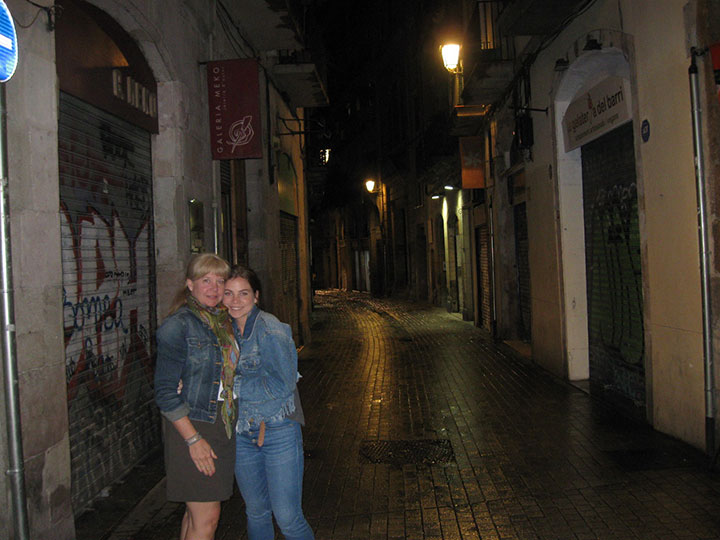
Day 6 (Tuesday) / April 4, 2017 (San Sebastian)
The Basques are very proud people—we would learn that quickly from our guide; but hale, so are my ilk, the Scotch-Irish, especially with a little liquor in our bellies. We hired a guide our first day in San Sebastian, Iñaki, and he ended up becoming a friend—he was a triathlete well versed in cycling. Iñaki picked us up at our hotel, the Astoria, and drove us out of San Sebastian and across the French border in about 20 minutes—we were that close. The entire time, Iñaki was telling us important details about the area and incorporating Basque history. Basques are indigenous to the region and even have their own language, a language with its own branch on the linguistic tree, a language “isolate” to any other known language. I even learned a few words: agur - goodbye; askarri-kasko - gracias; kaixo - hello. Franco forbid the speaking of the Basque language in 1973 in an effort to quell a separatist movement, and the effects still resonate. The language has been in decline but there is a strong movement afield to save the it by teaching it to youngsters in school. There is pride among the Basques when speaking in their mother tongue.
Iñaki drove us down the coast to various French seaside towns where Gay and I hopped out and walk along the craggy shoreline while waves crashed on the rocky cliffs below us. It was a cold, blustery morning, especially along the coast, but as walked, the sun rose higher and began to burn through the clouds. We walked through the seaport cities of Barritz and Saint-Jean-de-Luz and Iñaki told us that even though we were in France, this was still the Basque region and the locals were Basque people and spoke the Basque language. Whaling was a big industry once in this area and though outlawed now, there is an old French church dedicated to the whalers, the men who put their lives at risk chasing these giant Leviathans. The church has a stone entablature over the arched entranceway with an engraving depicting whalers with harpoons preparing to attempt to spear their prey—this was hand-to-hand combat and one can only imagine the countless lives lost at sea.
Though it was a windy day we saw several surfers in wet suits braving the icy water to ride nice size swells, and Iñaki confirmed this beach was a popular surfing locale. On an outcropping of rock a tall white lighthouse still was in operation. We walked along a winding walkway parallel with the cliffs, stepped over a bridge to a large rock on the ocean, and took photos with the choppy waters crashing onto the rocks and splashing us from behind The water was colder here than the Mediterranean, which Iñaki said made the fish taste better. “Basque fish must work harder because water colder, bigger muscles, better to eat,” he said. “The Mediterranean fish swim in warm water, they are lazy. Of course, they are Catalan,” he added.
We strolled through the old towns on the French coast too. In Biarritz, we ate pastries at one of the oldest bakeries in France and walked through an old city market with a large variety of seafood fresh off the boat—the smell of fish was pungent. In Saint-Jean-de-Luze we saw the old church where in 1690 King Louis XIV married Maria Theresa, the Infanta of Spain, putting an end to fighting between the French and Spanish, at least for a moment. Iñaki said it was an arranged marriage and he doubts King Louis XIV even liked Maria Theresa because he never came back to the area even though several famous houses were built to accommodate the royal party. The houses are still in fine condition and now house a city building, local businesses and a museum.
We crossed the border back into Spain and in another small seaside town—Lesaka—we ate lunch at a local restaurant run by the same Basque family for over one hundred years. The house specialty is a tortilla potato, which essentially is an omelet as big as a camel’s leg—the ends fell over the sides of the plate. The tortilla potato fed three and there was even a portion leftover that Iñaki took home to his wife. When the omelet was being prepared, we went back in the kitchen and took photos with the cook as our omelet fried in a giant saucer. The owner, a sweet Basque lady about 70 years old who spoke no English, sent us out a basket of croquetas, a type of tapa with a fried outer shell, like a hush puppy, and a delicacy inside—ours were filled with ham and cheese. Iñaki said during the war food was scarce so the locals had to use what they had on hand—they’d mix it together and fry it in dough—now they were small delicacies.
At all the tables the locals were drinking wine with lunch. In fact, bottles were placed on the table, even if it’s only one person dining. Iñaki said a customer drinks what he or she wants from the bottle, then it’s capped and placed on the next table—a customer pays for only what he drinks (we only saw men drinking). We noticed that in Spain, folks drink at lunch, a lot. Dinner too. So did we. And sometimes, after several glasses of Spanish wine, when we woke the next morning, we looked at each other and said, “Aye-yai-yai.”
On the way back to San Sebastian I asked Iñaki if we could drive over Alto de Jaizkibel (hith-qué-bell), the famous climb in the Clasica San Sebastian bicycle race. Iñaki knew the climb well and we did drive up and over the iconic climb. We climbed from sea level to 1,800 feet, and at the top, the Bay of Biscay spread out below us before we plunged down the gyring descent on the other side and back into San Sebastian.
Once in San Sebastian we walked along a sea wall and saw sculptures of bent steel bars driven into large rocks on the shoreline. We took more photos and it was getting cold so we headed back to the hotel—it had been a full day. Iñaki and I planned to meet the next day for a bike ride in the mountains. Game on.
We went back to the hotel and after a brief respite, we were out the door again. We explored the old part of the city on foot, and once again, came upon a majestic church, the Good Shepherd Cathedral of San Sebastian. It is built in the Neo-Gothic style and its construction was completed in the late 1800s. To say it is a stunning achievement is an understatement. The stone, glass and wood structure is immense and its lines flow sharply upwards, towards the heaven, as Gothic buildings do. The bell tower—a sharp cone decorated with buds—is the tallest pinnacle at 246 feet. The church can seat 4,000 people. The stonework, the giant arched porticos, the massive wooden doors and the stained glass are constructed with an old world craftmanship that seems to be lacking today. I’ve mentioned it before, but it bears repeating, the churches in Spain are other worldly. The architects who created these magnificent Gothic structures were trying to create a sacred space on earth, an axis mundi representing the connection between this world and the hereafter. I think they succeeded.
After a short trek around the old town to get our (my) bearings straight, we watched the Korrika running event that evening, which Iñaki said he was running in it. Korrika is Basque for running and is hugely popular in the region. Different runners—hundreds at a time—cover a distance of about 2,500 kilometers, running day and night without interruption for 11 days. The Korrika’s fundraising goal is to celebrate, encourage and support the Basque language. According to UNESCO, the Basque language is in danger of extinction so it was very cool to learn some of these ancient words and phrases. When the hundred or so runners came by they were chanting and singing and banging drums and the crowd was cheering and we were caught up in the spirit of the Basque people and we clapped and hollered and cheered too—a good time was had by all. The Basque people were beginning to grow on me, and reminded me more and more of my brethren back home in the holler—damn proud people, maybe too proud at times, but utterly resilient. If I’m in a war, it’s these folks I’d want beside me. We took aspirin that night before hitting the hay and we slept like zombies even though we didn’t drink too much wine that evening. We would make up for our lapse the next day, and then some.
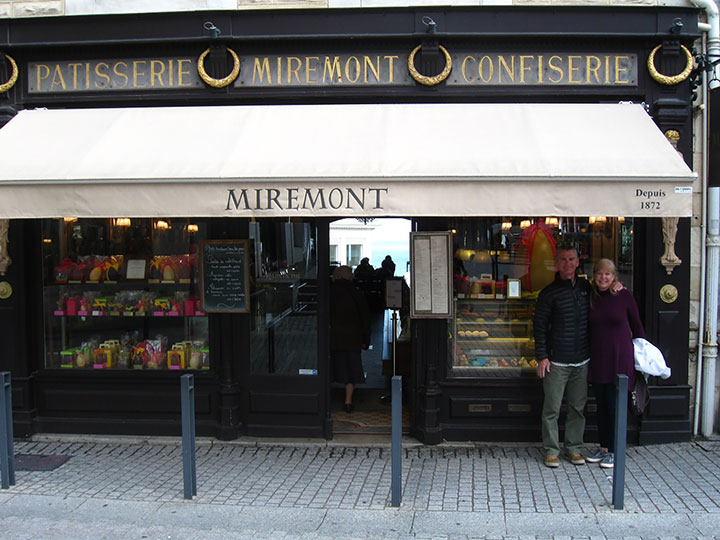
Day 7 (Wednesday) / April 5, 2017 (San Sebastian)
This day was destined to be great—the schedule was chock-full of adventures. First, Iñaki picked me up at the hotel and I rented a bike and we drove a short distance, parked, and started pedaling. Within a couple of miles, we were riding on a narrow road that runs by a river, and we were riding against the current—this is a tell-tale sign the road is climbing. We were surrounded by steep, verdant hills and some budding trees, as if spring were trying to break through. It was a damp chilly day and the landscape remined me of the North Georgia mountains. I had not expected this type of chill and I was underdressed, but Iñaki let me borrow a jacket and arm warmers. Still, the further we climbed, the colder it became.
Iñaki is a strong rider so riding with him was a good time. We rode through tiny villages that the blacktop barely squeezed through; we saw fluffy sheep grazing on near vertical slopes; and we rode by abandoned mines perched precariously on steep hillsides. We passed a dozen or so other cyclists but the further we went, the fewer there were until finally, there was only Iñaki and I. After about 25 miles we turned around and sped back down the corkscrew descent. Iñaki knew the roads so I sat on his wheel as he drove down the hill. When we arrived back at the car I was pumped—I was able to ride in Spain, Glory Hallelujah! But as I sat basking in my radiance, it dawned on me—Oh No, Gay’s been shopping! She had encouraged me to ride, and only now did I realize I’d been duped. She’d rid herself of me so she could spend at will! Aye-yai-yai.
Gay and I met back at the hotel and shortly after, hit the streets again. The Pais Vasco, a week long, world class stage race through the mountains in the Basque Country, was taking place this week and today’s stage was finishing in downtown San Sebastian. (“Pais Vasco” is the Spanish name given to the region.) We still had several hours before the finish so we explored the old city on foot. Like Barcelona, the old section of the city boasted narrow streets, beautiful apartment buildings, pedestrian malls, historic buildings, old churches, and neighborhood bars where pinxtos sit on the counter, cured hams hang from the ceiling, and bartenders wear white aprons.
When the race was about one hour from finishing, we meandered into a bar near the finish line and sat down and watched the race play out. David De La Cruz pushed out to a 10-second gap over a select group on the hilly course and held a small gap on the run into San Sebastian. We found a great spot on the fence at the finish line and saw the Quick-Step rider barely fend off a hard-charging pack by 2 seconds. The fans were beating on the boards lining the finish line so loudly it sounded like African war drums. Kwiatowski was second and Valverde and Visconti were in the top 5. The disappointment was evident on Kwiatowski’s face as he sprinted to the line. Contador was in the front group as were a group of world class climbers. We hung out after the race for the jersey presentation and walked by the luxurious team buses, which probably cost as much as four-bedroom house in Crested Butte.
Results (Stage 3: Pais Vasco 2017):
- David De La Cruz (Spa) Quick-Step Floors 3:54:25
- Michal Kwiatkowski (Pol) Team Sky 0:00:03
- Jay McCarthy (Aus) Bora-Hansgrohe
- Alejandro Valverde (Spa) Movistar Team
- Giovanni Visconti (Ita) Bahrain-Merida
- Rudy Molard (Fra) FDJ
- Diego Ulissi (Ita) UAE Team Emirates
- Patrick Konrad (Aut) Bora-Hansgrohe
- Tosh Van Der Sande (Bel) Lotto Soudal
- Warren Barguil (Fra) Team Sunweb
We walked back to the hotel after the race to prepare for the evening’s festivities, the pièce de résistance of the day, a wine and pinxtos tour with Iñaki. Iñaki was taking us to six or eight (or as many as you want, he said) local bars that were famous for a certain type or style of pinxtos. Naturally, Iñaki, who was also a wine expert, would suggest a certain Spanish wine with each pinxtos. Gay and I looked at each other with a serious expression and said, “We need to pace ourselves.” And even though we did exercise a degree of restraint, I was still glowing like a nuclear lightbulb at the end of the evening.
We left our hotel and the first stop wasn’t too far away. I enjoyed toast topped with salmon in sunflower oil and Gay ate an olive and pepper anchovy tapa. We had white wine at the first stop that slid down far too easily. At the stops that followed we ate shrimp and baby squid, crab, hammon, veal, grilled shrimp, salmon, foi gras and lastly cheesecake. After the initial glass of white wine, numerous glasses of red wine followed. In fact, I lost count. The last glass with the cheesecake was a sweet dessert wine and left a pleasant aftertaste.
After my last glass of wine, Gay hoisted me onto her shoulder and carried me to the hotel about one mile away and threw me into bed. What a day, I felt like a king, albeit a slightly drunk one. I was a little disappointed with my wife the next morning when I woke up and discovered she hadn’t bothered to take my shoes off.
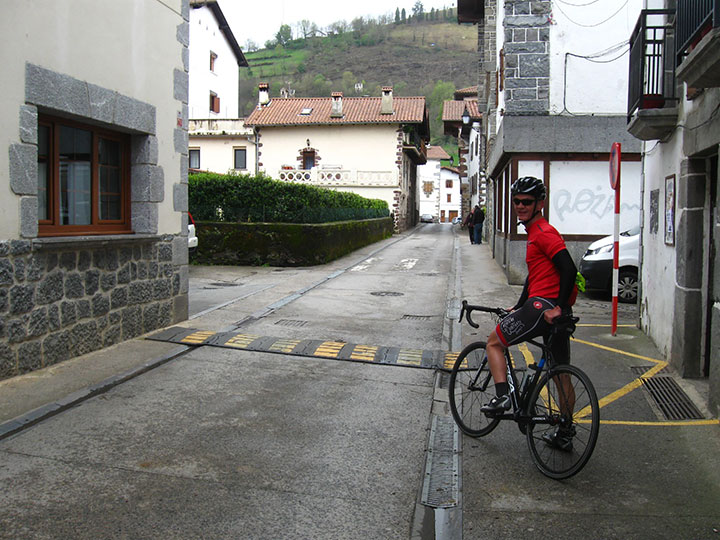
Day 8 (Thursday) / April 6, 2017 (San Sebastian > Bilbao > Madrid)
There would be no let up on Day 8—the itinerary was crammed with a long list. First, a diver picked us up at the hotel and drove us to the Guggenheim in Bilbao one hour away. It was evident on the ride over that even though we were heading east, away from the Pyrennes, this is still a hilly region. Approaching Bilbao, we saw the Guggenheim from the highway beside the river. A large metal spider at least thirty feet tall was perched atop eight spindly legs outside the museum on a concrete pad. People were walking under and through the spider’s legs. Later, we did the same and noticed the sculptor had even put eggs in the spider’s steel-slatted abdomen. The white eggs looked like pieces Tic Tac candy the size of bowling balls.
A guide gave us a tour of the Guggenheim. The Bilbao Guggenheim has several large halls that house huge exhibits—works that require immense space in order for the public to view. Most of the large exhibits at the Guggenheim were modern pieces, and unfortunately, they didn’t give me that “punch in the gut” like a work of art that moves me. For example, there was a personal journal displayed in a continuous loop of digital letters that moved up and down a vertical column. The lettering was in several languages and the digital script scrolled both up and down, backwards and forward. Another large exhibit was seven enormous pieces of sculptures by one artist in one room the size of a football field. The sculptures were three-inch-thick, vertical pieces of iron, like fins, fashioned into waves, loops, spirals and eclipses and fastened into the floor. A visitor could walk along, beside, around and in the sculptures; at times, it was a dizzying effect. Both exhibits took up inordinate amounts of space, yet the pieces, for me, didn’t have the impact intended by the artist.
The feeling was different when I saw works by Picasso. I had never seen a painting by Picasso in person and when I stood six inches away from one, eyeballing the ridges, the patterns and the coloring, I was riveted in place. The Bilbao Guggenheim has several pieces from before his surrealism period, when he was younger and still exploring styles as an artist. But in these pieces, even to an untrained eye like mine, his genius and his talent are evident.
We saw works by Warhol and other large modern paintings at the Guggenheim that were impressive. The Guggenheim also had several pieces by Jean-Michel Basquiat, a black street artist from Brooklyn who became a cause célèbre in the New York art world when Warhol took him under his wing. Basquiat died at 28 and his life sounds like it was torn from the pages of a Shakespearian tragedy. But his art lives on…at ridiculously steep prices. Basquiat’s work looks like street graffiti but is actually social commentary; his style is highly recognizable. But while I respect the man for devoting his life to his work, and his pieces were interesting, his work still didn’t make the angels sing, to me, at least. It would be different at the Prado in Madrid when I saw dozens of classical pieces by the well-known masters.
After the Guggenheim, we walked around the old city in Bilbao. The stage of the Pais Vasco was finishing in downtown Bilbao and we saw the stage and barriers set up but we would leave while the riders were still out on the road. Walking around Bilbao and marveling over beautiful old buildings was beginning to become old hat, but that’s what we did. Around 3 PM our driver drove us to the airport and after a short wait, we boarded a plane for Madrid. An hour later, we landed, and it was hot. We were in the center of Spain. And though our taxi driver spoke no English, he managed to drive us through rush hour traffic and deliver us safely to our hotel in downtown Madrid, the Hotel Grand on the Gran Villa.
Gay had once again scored an A for the hotel room—this one was grand, not only in name. We had a corner room with a balcony overlooking the street, a large bathroom and walk in shower, and a queen-sized bed. After unpacking, we hit the reset button and were once again out the door.
At first, we just cruised, heading down this street then that, in no particular order; it’s what I like to do. Like all the cities we’d been in, in the old part of the city the roads are paved with brick or stone and are very narrow, almost an alley. Many skinny streets are pedestrian only. People were walking everywhere and we were going with the flow and people watching, one of our favorite pastimes. We also like to listen to the locals talk. Though we don’t understand the language it’s nice to hear it Spanish roll off a native speaker’s tongue; it’s like rapid-fire machine-gun spray. And they use their hands a lot to gesticulate—they are emotional speakers.
We kept walking in downtown Madrid and finally Gay was out of her comfort zone—she was lost. No fear, I knew about where we were, sort of. She didn’t feel better when three thick-bodied, deep-voiced, hairy-legged hookers in glitter dresses eyeballed us as we walked by. But just before she panicked we stepped around a corner and out onto the Gran Villa—it’s one of the major thoroughfares and the fact our hotel was nearby let her breath easy. Gay’s encounter with Spanish hookers had left her a bit frazzled so we stopped at an outdoor café and ate burgers and drank wine. We both felt better after two glasses, great after three. We slept like knots on a tree.
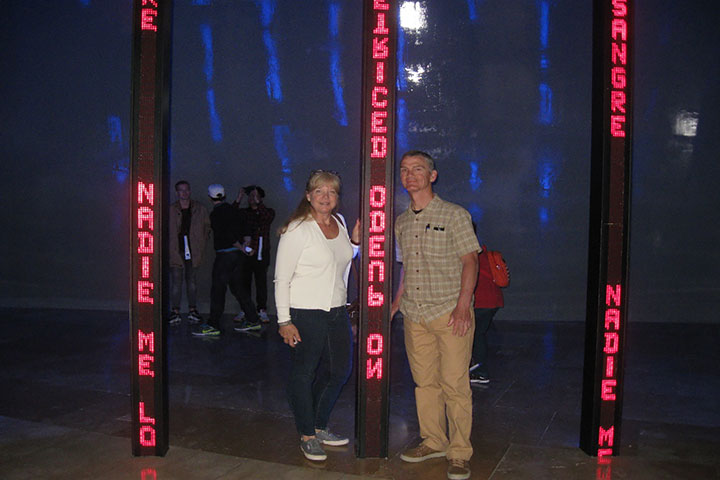
Day 9 (Friday) / April 6, 2017 (Madrid)
Day 9 in Madrid was another epic day, we were going for broke on our last full day in Spain. Our guide, Carmen, met us at the hotel at 9 AM—we were going on a walking tour of the old city. We walked to heart of the city where many government offices are housed in centuries old buildings with cupolas, columns, arched doorways, casement windows and policía with Uzis. We stood on a plaque that marked not only the heart of the city, but the dead center of all Spain. We next walked to Plaza Mayor in the heart of the old city. The Plaza is enormous and is enclosed on all four sides by residential apartments with 237 balconies, all facing the Plaza. The Plaza was built during the reign of Philip III (1598-1621) and nowadays hosts certain civic functions and cultural events. In the past, it also served as a place of execution for those convicted in the Inquisition. The balconies must have been the prime viewing locations to cheer on one’s favorite executioner.
We toured the oldest restaurant in continuous operation in the world, open since the mid-1500s. It was a small stone grotto with a wine cellar deep underground with hundreds of dusty bottles in old wooden racks. Gay found another famous old local shoe store that sold Espadrilles—she came back later and racked-up on shoes for she and the girls. Once again, the old city was full of narrow streets and beautiful buildings. We walked through another old market in the old city, Mercado de San Miguel, a magnificent historic wrought-iron-and-glass structure just off Plaza Mayor.
Next, we trekked over to the Royal Palace, the official pad of the royal family (although they no longer live there). It is the largest royal palace in Europe by floor area and the interior of the palace is packed with works of art worth millions and millions. There are murals painted on ceilings, ancient armory preserved in pristine condition, a dinner table that can seat over one-hundred people, ornate tapestries, marble floors, crystal chandeliers and handwoven wool rugs. Strolling through the rooms in this palace was like floating in a sea of opulence. It’s easy to see why the starving masses in Europe rebelled against the aristocracy—it’s hard to imagine how one family can amass this much wealth. Cervantes was marking the end of such an era in his masterpiece.
Outside the Royal Palace a visitor can look to the north over a wooded area and see mountains fifty miles away. Our guide, Carmen, indicated these woods are where the former kings of Spain hunted. In front of the Royal Plaza is another enormous plaza and sitting opposite is the Almudena Cathedral. The cathedral is the seat of the Roman Catholic Archdiocese of Madrid and was consecrated by Pope John Paul II in 1993. We didn’t have a chance to go inside but the gray and white exterior matches the façade of the Royal Palace. The building has two bell towers on either side of a dome with a spire. The two enormous structures situated in this one plaza are a striking example of the marriage between church and state over the years in Spain.
It was a beautiful, sunny day in Madrid so after touring the Royal Palace there were still a couple of hours of daylight left so we decided to take a taxi to the Prado, the Spanish National Art Museum. We had visited several enormous buildings and the Prado was no exception. A visitor could spend several days viewing all there is to see, but since we only had a couple of hours, we zeroed in for the kill. We walked through halls containing paintings by the masters: Goya, Velázquez., Caravaggio, Raphael, Rembrandt, Monet, Matisse and dozens of other renown artists. A special room was dedicated to Goya’s original Black Paintings created on the wall of his house when he was disillusioned and possibly mad. Many of the paintings at the Prado hit a viewer deep in the gut—they were moving, inspiring, and could touch a person down in the golden part of his soul. Superlatives simply can’t do these paintings justice; these artists must have been inspired divinely.
One of the most moving pieces was one I was not familiar with, And They Still say Fish are Expensive!, an oil on canvas painted by Joaquín Sorolla y Bastida. Of the painting, the Prado’s website states:
And They still say Fish is Expensive! shows a scene inside the hold of a fishing boat, where a young sailor, barely a boy, is lying on the ground after an accident at sea. On his naked torso hangs a medallion, a protective amulet to guard fishermen against misfortune. The young man is treated for his injuries by two old fishing companions, both with serious concentration on their faces… The beholder is first struck by the silent, restrained fortitude of the two old seadogs as they care for the delicate, helpless body of the injured youth. The scene has all the dramatic solemnity of a profane pietà, imbued with a noble, manly poise which Sorolla alone was able to draw from the souls of Valencia’s fishermen… Reviews of this renowned painting, which in its day even inspired passionate poems in tribute to its author, have been virtually unanimous in their praise.
The painting is based on the last passage in the novel The Mayflower (pub. 1895) by Vicente Blasco Ibáñez. The novel describes the dangerous and foul lives of Valencian fishermen and ends with the story of an accident and rescue of a dead body, which is carried into the lower holds of the boat. The solemn painting achieved the artist’s goal—I immediately felt sympathy and compassion for the fisherman. I could have stared at that the painting for hours.
But right when I was about to start weeping, Gay became hangry. “Hangry” is new descriptive term to describe a person who has walked 8 miles in one day, about 50 miles over the course of a week, is hungry, tired, irritable, and who wants a drink, and whose husband is yammering away about some damn fishermen tending to a boy in a boat. So I did what I do—I bit my lip, dried my tears, and said, “Yes, ma’am.” We departed the Prado and headed to the room. It was almost 6 PM and we still had 1 mile to trek, and though one might not see them, I was walking on eggshells. But we regrouped at the room, slapped on that never-fail French perfume, took a deep breath, and headed back out into the night. It was our last night in Spain and we weren’t going to waste it.
We ate dinner that night at Bosco de Lobos, a secluded Italian restaurant in the heart of the old city—it was one of our favorite meals. We ordered a bottle of wine, ate fried artichokes and wood-fired pizza, and finished it off with a large slice of chocolate cake layered with ice cream. My belly was stuffed and my body was warm with wine, life was good. We drank the bottle and toasted Spain.
Day 10 (Saturday) / April 7, 2017 (Madrid > London > Atlanta)
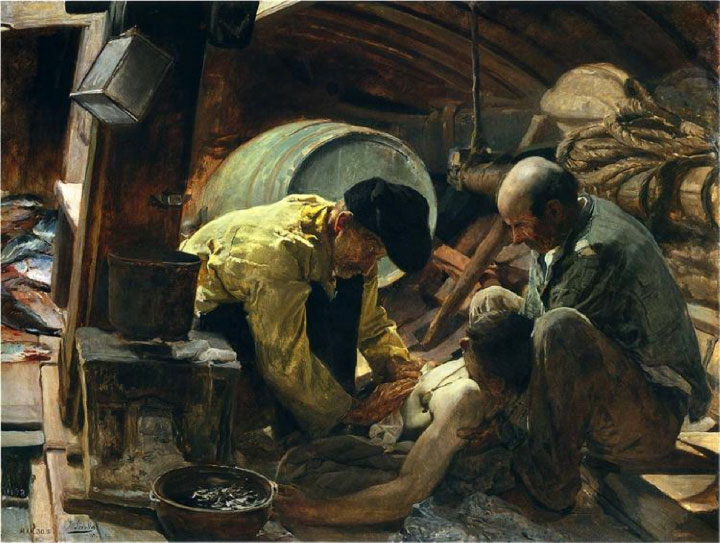
Day 10 was departure day; we were both happy and sad. We were sad to be leaving, but happy to be heading home. It was another long and arduous day sitting in a long tin tube, but we endured and Saturday night about 11 PM we were back home in Athens. Gibby and Roscoe were yelping for joy when their Ya Ya (Gay) walked in the door. Secondarily, they were happy to see me too. That night Roscoe curled up beside Gay and Gibby lay at the foot of the bed on the floor—life was normal again.
It took us several days to recover from not only the time change, but the epic amount of energy we expended—we walked at least 50 miles! And we’d traveled a lot—not only by plane, but also by train, taxi and car. And when we came back, the pollen which normally doesn’t affect me, hit me like a hammer to the head. But the memories made it all worthwhile. To see Barcelona was grand, but to experience the city while Jamee was living there was a special treat Gay and I will never forget.
David Crowe
May 1, 2017
